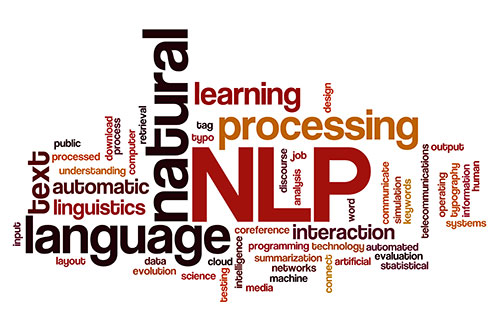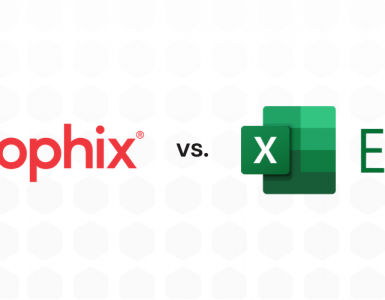Innovation is like motherhood. Everyone loves it as a concept but practicing it in your own life is quite another story. In practice, neither innovation nor motherhood are vague, feel-good concepts. They are in-your-face realities that change why and how you do things. If you do them well, you reap big rewards.
In this space, we are going to dive into the practical application of emerging technologies that can result in innovation. Not the amorphous buzzword notion of innovation but the specific application of new, better ways to do things in business intelligence, performance management, data management and analysis, and related fields.
We will look at the application of natural language tools, artificial intelligence, blockchain et al. from the technical point of view of a company that is committed to and invested in applying them to our business. Most mid-market companies like Prophix have a Research & Development (R&D) budget that is actually a “D” budget. Resources are used to develop products, and new versions of products with added features.
Prophix leadership recognized that to actually innovate – to find new and better ways to do the things our customers want to do with their data – we need to do more of the “R” in R&D. That’s what we explore in this space: the possibilities and challenges involved in reinventing tools and processes.
One caveat – We will be discussing our research into applying new technologies in ways that create genuinely innovative results. But not every piece of research results in a product. Some may, some may not. This is not a Prophix product road-map. It is research into what’s possible and what’s not.
The Promise of Natural Language Processing (NLP)
Wouldn’t it be great if you could call into your Corporate Performance Management (CPM) system from anywhere in the world and say something like: “What were widget sales in the southeast U.S. last month and how did that compare to the same month a year ago?” Or maybe, “What were the unusual expenditures for the Gorgon division in Q1?”
Then, instead of waiting hours, days or weeks for a multi-page report, you get a spoken or written response in seconds or minutes. Information you can act on immediately.
That is the promise of Natural Language Processing, which is one of three primary research themes at Prophix. The others are Machine Learning and Anomaly Detection.
The History of NLP
Computer scientists have been working for some 70 years on the challenge of getting machines to understand and respond in natural human language, with all its nuances, contextual inconsistencies and complexities (e.g. “Jeet yet? No, d’joo?”).
By the 1990s, advances in processing power enabled the development of machine-learning algorithms for language processing. Early machine-learning algorithms, such as decision trees, were rigid systems of “if-then” rules.
Eventually, that evolved into statistical models that make soft, probabilistic decisions by attaching real-valued weights to the features of inputs (depending on context, it’s more likely that a “dead-cat bounce” refers to a temporary financial recovery than to a deceased feline.).
For the purposes of this article, we’ll look at two dominant approaches to NLP today.

Two Different Approaches to NLP
First Approach
Approach one is the Cache Model, which is based on statistical models that make those aforementioned soft, probabilistic decisions by attaching real-valued weights to the features of inputs (word definitions, grammar, syntax, context). The Cache Model – built from the ground up — is being pursued by IBM (Watson), Apple (Siri), Amazon (Alexa), Google (Google Assistant) and Microsoft (Cortana). They capture the universe of intent – creating an intent language from scratch that captures the intent of every word or combination of words in context. These companies have thousands of people building out their natural language libraries, mostly for consumer applications (e.g. “OK Google, set the air conditioning at 71, turn on the kitchen lights and play Little Deuce Coupe.”).
IBM has been training Watson for use in specific fields, such as finance or healthcare (e.g. “Watson, what is the most effective diabetes treatment for morbidly obese 55-year-old men in New England?”).
The Cache Model is quite effective, even with unfamiliar input that contains errors. It can be integrated with (used as a front-end) for other systems.
Second Approach
The second approach is retrofitting a product with natural language capability — a bit like adding wings to your BMW. This is what Prophix is doing.
Standing on the shoulders of giants, we are using the technologies provided by these other vendors to enable our Corporate Performance Management software. We’re doing this because of our absolute belief that the interaction model for ALL future applications will involve some form of Natural Language, and we intend to get there ahead of the competition.
That is not without some technical complexity. OK, that’s an understatement. To start, it requires the use of four languages:
- A Domain Specific Language (DSL): This is a computer language – ours is built on PowerShell, which provides a library of basic functions specific to Prophix. We build the DSL first, so we have something that drives our applications.
- A higher level “English-like” iteration of the DSL that is easy to type but compiles down to our basic DSL for execution.
- A spoken language (natural language) that returns the “intents” of the words. We use Amazon Lex to build the conversational interfaces (voice and text) with our CPM tools. This provides the automatic speech recognition for converting speech to text, and natural language understanding to recognize the intent of the text, and gives our users the ability to simplify their interactions with their CPM data. In other words, the DSL enables us to create sophisticated, natural language, conversational chatbots.
- Finally, we need a compiler that converts “intents” to our basic DSL (see #1)
All of that is just the natural language part – the innovative way to get useful data-driven insights into our clients’ hands (or ears.).
Because our application resides in the cloud, and because we envision our users will want access to their data and related insights from a slew of mobile and non-mobile devices, we also need to connect multiple tools, databases (SQL, etc.) and applications (various ERP modules, HR, Salesforce, etc.) securely to Prophix’s functionality. But that’s a story for another day.
Innovation in Finance
Driving innovation in your organization is no easy task.
Companies need to evaluate where they are investing their R&D budgets, and how they are addressing the possibilities and challenges involved in reinventing their tools and processes.
The practical application of natural language will allow for almost instantaneous access to valuable data, giving finance professionals more time to focus on strategic decision-making.
Here are few key points:
- Innovation is about finding a new and better way to do things
- To innovate, you need to focus on the research portion of your Research & Development budget
- Natural Language Processing is one of the three main areas of research at Prophix
- The two approaches to Natural Language Processing are the Cache Model and retrofitting a product with natural language capability
We invite you to comment, probe, question, and even challenge our thinking here. We’ll do our best to address your comments, and to learn from them.






